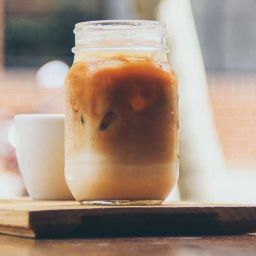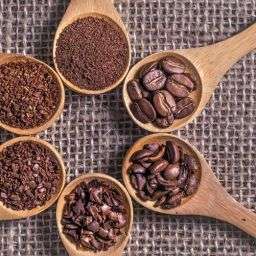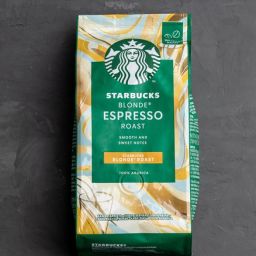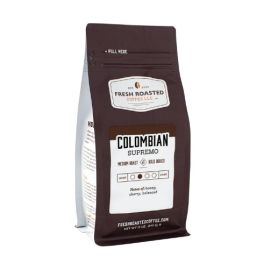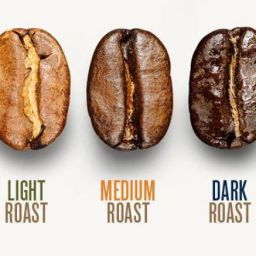
Delving into the world of coffee brewing with a large electric percolator can transform your coffee routine into an art form. Imagine waking up to the rich aroma of coffee, brewed to perfection in a device that’s been a favorite for generations. A large electric percolator not only caters to the needs of coffee enthusiasts but also serves as a delightful way to prepare coffee for gatherings, ensuring no one misses out on their caffeine fix.
Key Takeaways
- Convenience at Its Best: Discover the ease of using an electric percolator, which automates the brewing process, allowing you to focus on savoring your coffee.
- Brewing Method Mastery: Learn the unique way a percolator brews coffee, cycling hot water through coffee grounds to extract full-bodied flavors.
- Flavor Optimization: Gain insights into selecting the right coffee beans and water quality, crucial for enhancing your coffee’s taste.
- Customization Tips: Explore how you can tailor your coffee’s strength and flavor to suit your palate, making every cup your personal brew.
- Maintenance Know-How: Understand the simple yet effective steps to maintain and clean your percolator, ensuring it remains a reliable brewing companion.
Essentials for Brewing in a Large Electric Percolator
Brewing coffee in a large electric percolator isn’t just about throwing in water and coffee; it’s an art that requires attention to detail, starting with the essentials. Let’s break down the core components you need for a perfect brew.
Quality Coffee Beans: The heart of any coffee brew is the beans. Opt for fresh, whole beans that you can grind to the right consistency. The fresher the beans, the more flavorful your coffee will be. Whether you prefer a light, medium, or dark roast, choose beans that reflect your taste preferences.
Coarse Grind is Key: Unlike other brewing methods, percolators love a coarse grind. A fine grind can lead to over-extraction and a bitter taste. Think of sea salt granularity; that’s the texture you’re aiming for. A burr grinder is your best friend here, giving you an even and consistent coarse grind that’s ideal for percolation.
Filtered Water for Purity: The water you use is just as crucial as the beans. Hard or impure water can introduce off-flavors and affect the overall taste of your coffee. Using filtered water ensures that nothing but the coffee’s natural flavors shine through. Plus, it helps in maintaining your percolator, preventing scale buildup from hard water.
The Right Proportions: Getting the coffee-to-water ratio right is essential for the perfect brew. A general guideline is one tablespoon of coffee for every cup of water, but feel free to adjust based on your strength preference.
Patience and Precision: Percolation isn’t a rush job. Give your percolator the time it needs to cycle the water through the grounds, extracting all the rich flavors and aromas.
Step-by-Step Brewing Process
Brewing coffee in a large electric percolator is a satisfying ritual that combines tradition with simplicity. Here’s a concise guide to navigate you through the process, ensuring a rich and robust cup every time.
1. Water First: Begin by filling your percolator’s reservoir with cold, filtered water. If your model has markings, they can guide you on the amount needed based on the number of cups you’re brewing. Remember, good water quality translates to good coffee.
2. Coffee Grounds: Next, add your coarsely ground coffee to the basket. The general rule is about one tablespoon per cup of water, but feel free to adjust to taste. Ensure the grounds are even and not too fine to prevent them from slipping through the filter.
3. Assemble: Place the basket on the stem, ensuring it sits correctly. Close the lid securely; your percolator should be sealed well to prevent steam from escaping during the brewing process.
4. Let’s Brew: Plug in the percolator and turn it on. Most electric percolators take care of the brewing process automatically. They heat the water, which then percolates up through the coffee grounds, saturating them to extract flavor before the brewed coffee settles back down.
5. Timing is Crucial: Brewing time varies, but it generally takes about 7 to 10 minutes. Some percolators stop automatically when done, while others may need manual monitoring. Look for the bubbling or perking sound as an indicator that your coffee is brewing.
6. Serving: Once the brewing cycle is complete, unplug the percolator. Let it sit for a minute to allow the coffee to settle. Then, carefully pour your freshly brewed coffee into cups. Enjoy it black or customize it with milk, sugar, or your preferred additives.
7. Clean Up: After enjoying your coffee, don’t forget to clean your percolator. Discard the used grounds, disassemble the parts, and wash them thoroughly to prepare for your next brewing session.
Tips for Choosing the Best Coffee Beans and Water
When it comes to brewing coffee in a large electric percolator, the choice of coffee beans and water plays a pivotal role in determining the flavor and quality of your coffee.
Selecting Coffee Beans:
- Freshness Matters: Always opt for the freshest beans you can find. The closer to the roast date, the better the flavor.
- Roast Type: Your preference matters. Whether you enjoy a light, medium, or dark roast, choose beans that align with your taste buds.
- Origin and Variety: Different regions and bean varieties offer unique flavors and profiles. Experiment with different origins to find your favorite.
- Whole Beans Over Pre-ground: Buy whole beans and grind them just before brewing to preserve the essential oils and flavors.
Choosing the Right Water:
- Quality is Key: Water makes up the majority of your coffee, so its quality is crucial. Use filtered or bottled water if your tap water is hard or has a noticeable taste.
- Temperature Control: Ensure your percolator is heating the water to the optimal temperature, typically around 195°F to 205°F, to properly extract the flavors.
Advanced Brewing Tips
Achieving the perfect brew in a large electric percolator isn’t just about following the basic steps; it’s about fine-tuning the process to match your personal preferences.
Grind Size Adjustments:
- A coarse grind is recommended for percolators, but slight adjustments can make a big difference. If your coffee is too weak, try a slightly finer grind. If it’s too strong or bitter, go a bit coarser.
Brewing Time Fine-tuning:
- While electric percolators manage time, observing the brewing cycle can offer insights. If your coffee consistently tastes over or under-extracted, consider adjusting the brewing time if your percolator allows it.
Experimentation is Key:
- Don’t be afraid to experiment with different bean varieties, grind sizes, and brewing times. Note what you like and what you don’t, and adjust your process accordingly.
Customizing Your Coffee
Your coffee from a large electric percolator can be more than just a standard cup; it can be a personalized beverage that caters to your unique taste preferences.
- Milk or Cream: Adding milk or cream can soften the robustness of percolated coffee. Whether you prefer dairy or plant-based alternatives, a splash can introduce a smooth texture and rich flavor.
- Sweeten It Up: If you like your coffee sweet, consider sugar, honey, maple syrup, or artificial sweeteners. The key is to start small and adjust to taste.
- Spice Things Up: Infuse your coffee with a dash of cinnamon, nutmeg, or vanilla extract to add a new flavor dimension. These spices can complement the natural coffee flavors and add a cozy touch.
- Experiment: Don’t hesitate to mix and match different additives to discover your perfect coffee concoction. Your cup of coffee can be as unique as you are!
Cleaning and Maintaining Your Percolator
To ensure your large electric percolator continues to produce delicious coffee, regular cleaning and maintenance are essential.
After Each Use: After brewing, discard the grounds and rinse the basket and pot with warm water. Avoid using abrasive materials that can scratch the surface.
Deep Clean Regularly: At least once a month, give your percolator a thorough cleaning to remove any buildup. You can use a mixture of water and vinegar to descale and cleanse the interior.
Check the Parts: Regularly inspect the percolator’s components, especially the cord and plug, for any wear or damage. Replace any parts as needed to keep the device functioning safely and efficiently.
Storage: When not in use, store your percolator in a dry, cool place to prevent any damage or odor absorption.
FAQs
What’s the ideal coffee-to-water ratio for a percolator?
The golden rule is about one tablespoon of coffee for every cup (8 oz) of water. However, this can vary based on personal taste preferences. If you prefer a stronger brew, add a bit more coffee; for a lighter cup, use less.
How do I know when my coffee is ready in a percolator?
Electric percolators typically have a light or a sound indicator to let you know when the brewing process is complete. If yours doesn’t, a good rule of thumb is that brewing usually takes 7 to 10 minutes. When the coffee stops percolating, it’s ready.
Can I use fine ground coffee in a percolator?
It’s best to use coarse ground coffee in a percolator. Fine grounds can pass through the filter and into your brew, resulting in a gritty cup of coffee.
Is it possible to over-brew coffee in a percolator?
Yes, if the coffee percolates for too long, it can become overly strong and bitter. Watching the brewing time and adjusting based on your taste preferences is essential.
Final Thoughts
Brewing coffee in a large electric percolator is an enjoyable and rewarding experience that combines tradition with convenience. By selecting quality beans and water, mastering the brewing process, and personalizing your cup with your preferred additives, you can enjoy a delightful coffee experience every time. Remember, the key to great percolator coffee lies in the details: the grind size, water quality, and brewing time.




